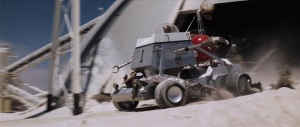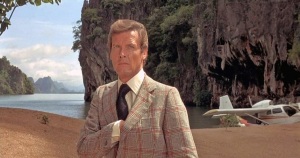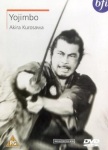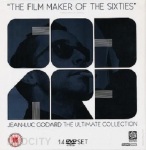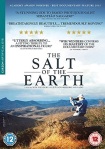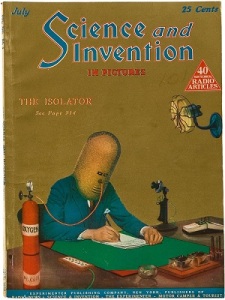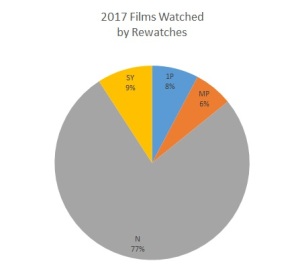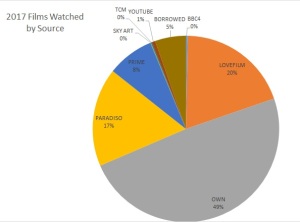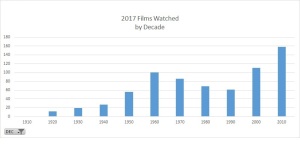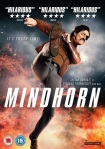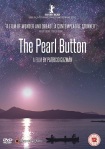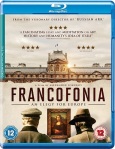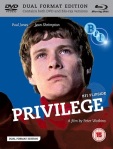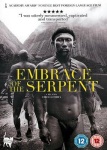During December I watched all of the 007 films in order after buying the Blu-ray collection for a cheap price on Black Friday. That’s twenty-four films, stretching from 1962 to 2015, featuring six actors as James Bond. Most people have their favourite Bond movie, and indeed their favourite Bond actor, but opinions differ widely on which are the good ones and which are the bad ones. Some, I think, we can all agree on… But I was surprised to find my own internal ranking of the films changing considerably as I watched the movies.
So, in reverse order, from worst to best, that’s worst to best, here are the movies…
24 Moonraker, Lewis Gilbert (1979). Bafflingly, some people actually think this is a good Bond film. They’re wrong. It’s fucking awful. It’s fan service all the way through, married to a plot that sticks like glue to the Bond formula, with a central premise as dumb as the Fake Moon Landings. Hugo Drax has stolen his own Space Shuttles so he can send crew to his stealth space station, from which he plans to re-populate the Earth after he has wiped out everyone with a deadly toxin. There are more holes in the script than in a block of Gruyere. There’s a resurrected Jaws, who eventually joins forces with Bond. And Moore’s Bond is at his most sexist – Lois Chiles is supposed to a scientist and astronaut, but is treated as if such a thing were impossible for a beautiful woman to be. Truly, Bond’s worst outing.
23 Die Another Day, Lee Tamahori (2002). The Brosnan films surprisingly proved to be quite bad, which I had not expected, although Brosnan certainly looked the part. Of the four Brosnan movies, this one is easily the worst – a North Korean general who has “gene therapy” to make himself look like Toby Stephens, discovers a lucrative diamond field in Iceland, and in under a year manages to become a darling of the UK’s political set. And then there’s the invisible car, FFS. I’m not sure what killed it for me: the invisible car, Will Yun Lee “becoming” Toby Stephens, the villain with the diamonds embedded in his face, or Bond walking into a Hong Kong luxury hotel after escaping from a North Korean prison and looking like an escapee from a, well, North Korean prison, and being treated like a frequent and much-valued guest. FFS.
22 A View to a Kill, John Glen (1985). The most eighties of the 007 films, from Christopher Walken as the villain, eighties icon Grace Jones as his sidekick, and a plot that focuses on Silicon Valley. To be honest, I was cheering for the villains. Silicon Valley is full of a lot of very horrible people and the world would be a better place without them. But back in 1985, Silicon Valley was still viewed positively. Walken wants to destroy Silicon Valley so that he can corner the market in manufacturing microchips, which Intel have pretty much done entirely legally in the decades since, and most integrated circuit foundries aren’t in Silicon Valley anyway, it’s mostly software, but never mind. It sounded plausible back in 1985. If you didn’t think too hard. What didn’t sound plausible was corporate executives falling out of the sky when Walken dumps them from the blimp in which he holds his business meetings. Tanya Roberts was a very eighties Bond girl, part TV detective, part damsel forever in distress; and the chase scene with the ladder truck was quite good if over-long. No discussion of A View to a Kill would be complete without mention of the theme tune, which was by Duran Duran… and not the worst the theme tune by a long way.
21 Skyfall, Sam Mendes (2012). There was a general atmosphere of back-to-basics with the Craig Bond films. No more silly gadgets, no more jet-setting playboy (well, okay, maybe they’d keep that), but it would be a darker, more callous, more brutal Bond, like the one in Fleming’s novels… Instead, what we got was a superhuman Bond, able to snap restraints just by pulling his hands apart, and villains who could run giant server farms without the use of airconditioners. The giant server farm is important, because it allowed the villain access to all sorts of stuff, including MI6’s highly-secure computer network. Which is, er, not how computer networking works. When you remember that Tomorrow Never Dies actually mentions secure sockets, but by Skyfall it’s back to Star Trek levels of magical abilities with computers in order to drive the plot. The title refers to a house in the middle of the Highlands, the Bond family home, long since abandoned, where 007 takes a final stand against villain Javier Bardem, who is especially villainous because he is a little bit gay. Having said all that, Skyfall accidentally served quite well as the lead-in to the total retcon job that was…
20 Spectre, Sam Mendes (2015). So the secret organisation alluded to in Casino Royale, and which drove the plot of Quantum of Solace, was called Quantum. And Skyfall was totes unrelated to that story arc. But then Eon finally resolved the rights issues over Thunderball with Kevin McConroy, and that included the use of SPECTRE (Special Executive for Counterintelligence, Terrorism, Revenge and Extortion), so they retconned all three Craig films into one story arc such that Spectre (they ditched the naff acronym) could be the Big Baddies. And that’s what this film is all about. It’s about writing Blofeld back into the Bond franchise. And, to be honest, I’m not convinced it’s better than Skyfall – in fact, the two films should probably be considered 20= except…I like the way they introduce Moneypenny, and the chase sequence in Istanbul is pretty cool. On the other hand… in From Russia With Love, Sean Connery and Robert Shaw fight aboard a train and do a bit of damage to Bond’s compartment; in The Spy Who Loved Me, Bond fights Jaws and they trash 007’s compartment; but in Spectre, Craig Daniels and Dave Batista manage to destroy the interior of an entire fucking train during their fight scene. Craig’s Bond is some kind of superpowered superhero, which ruins the character; and Spectre does not help by having a wimp of a vaillain like Oberhausen.
19 Tomorrow Never Dies, Roger Spottiswoode (1997). Michelle Yeoh was probably the best Bond girl of them all, and there’s something frighteningly plausible about a media mogul kicking off a war just so he can break into the Chinese market… but Tomorrow Never Dies committed the common Bond sin of having an extended very violent action sequence in a real place which seems to go completely unnoticed by the authorities. In this one, a convoy of black SUVs and a black helicopter shoot up Bangkok (standing in for Ho Chi Minh City) and there’s not a single police officer or soldier to be seen. Compare that with the tank scene in St Petersburg in GoldenEye. The plot of Tomorrow Never Dies also depended far too much on a single piece of gadgetry – the stealth ship. These exist, of course – the USS Zumwalt, for example – but the problem with centring the plot on a single piece of gadgetry is that the writers have to stretch denial of its existence far longer than is plausible.
18 Live and Let Die, Guy Hamilton (1973). Two things about this film stand out: the Wings theme tune, and Jane Seymour in the role of Solitaire.This should be one of the good ones. It’s moore’s first outing in the role, and Yaphet Kotto makes an excellent villain. But, for all my preference for Bond films which dial down the gadgets and supervillains, Live and Let Die leaves me feeling meh. The speedboat chase had its moments, but goes on for far too long. The redneck sheriff should have been left on the cutting-room floor (and certainly should never have made it into a second Bond film), and the voodoo stuff seems to be used chiefly for colour without much actual explanation.
17 Diamonds Are Forever, Guy Hamilton (1971). In some respects, I think of this movie as the iconic Sean Connery Bond movie. It has it all: the silly gadgetry in that Moon Buggy, Blofeld (played by Charles Gray this time), and even a maguffin as ridiculous as a music cassette to drive the story – because of course the guidance program for a satellite launch would easily fit onto a C60… On the other hand, it all feels a bit tired, since Connery was only back after Lazenby walked away. Jill St John makes an excellent Bond girl, but villains Mr Wint and Mr Kidd are characterised as evil because they’re a little bit gay… It has that sort of emblematic, but not especially great, 007 feel to it all. It seems entirely fitting it is mostly set in Las Vegas…
16 GoldenEye, Martin Campbell (1995). This was Brosnan’s first outing as Bond, and the indications were he’d make a good fist of it. Okay, so the central premise of this film is pure bollocks – the Russians built a giant orbiting EMP gun which the US knew about, but they didn’t know about the second one they built and put into orbit? Er, right. And the control centre for this EMP gun, it has big tanks of liquid nitrogen and fuel alongside the computers. Who does that? Who puts fuel tanks in their server room? Isn’t that a recipe for disaster? Oh look, it all blows up very nicely. Sean Bean makes for a good villain, and the tank chase scene in St Petersburg at least had the advantage of being acknowledged by the authorities – even if, wierdly, no one seems to die after being crushed by a tank; shot to death, yes, but no one is killed in the chase scene from automobile accidents. There’s an optimism to GoldenEye the other Brosnan films lack, not just because there’s a new Bond but because glasnost means they can now film in Russia even if they have to look elsewhere for villains – but hey there are plenty of leftover bits of the USSR they can use… GoldenEye promised much, but Brosnan’s later outings as Bond failed to deliver. Mostly.
15 Dr No, Terence Young (1962). This was a difficult one to rank. Dr No is not an interesting villain – it’s a white actor in yellowface, FFS – but it’s the first Bond film, and that sort of gives the movie a certain cachet. It’s also a pretty stripped back story. Since it’s the first film, some of the elements of the formula had yet to become cliché, which works in its favour – even so, there’s still a Bond girl, and Bond still has sex with an ally and a henchwoman. Ursula Andress is mostly a blank and she’s effectively written out of the story in around 30 minutes. The central premise – Dr No seizing control of US rockets after launch – is one the Bond films used several times – as indeed did Bond-spoof Matt Helm – and it has never really stood up to scrutiny. Plus, all that machinery at Crab Key… what was it for?
14 The Living Daylights, John Glen (1987). This was Timothy Dalton’s first appearance as Bond, and I vaguely remember people being unsure about his casting…. which is probably why Eon Productions went all out for this one. It even has a Harrier jump jet taking off from inside some sort of cooling tower! Dalton plays a no-nonsense Bond, who from the moment he first appears on screen takes no shit. The story has some interesting locations, but the two villains – Soviet general Jeroen Krabbé and toy soldier arms dealer Joe Don Baker – are a bit pathetic. Their tame assassin, played by Andreas Wisniewski, manages to make a completely monkey of the British secret services, which didn’t come across as all that plausible. And then, of course, there’s the theme tune, performed by A-Ha, which was a lot worse than I remembered it.
13 You Only Live Twice, Lewis Gilbert (1967). This was the first Bond film where the producers pretty much only took the title from Fleming’s novel. Not that the novel had much of a plot, it reads more like fleming showing off his research about Japan. Roald Dahl wrote the script, and kept the action in Japan, but instead threw in some SPECTRE silliness about rockets launching from a secret base inside a defunct volcano caldera in order to hijack US space capsules in orbit. Seriously? Their first rocket launch would have burnt out their entire secret hideout, and probably triggered an eruption. Also, to lift a spacecraft into orbit that could swallow the US Gemini capsule, they’d have needed a much bigger rocket. This was Connery’s fifth film as Bond, and he pretty much sleepwalks through it. In fact, he called it a day after this one, but ended up coming back for one more film after Lazenby walked away from the role. There’s some good aerial photography in the air combat scene with Little Nellie, but the formula had already pretty much taken over the franchise by this point.
12 For Your Eyes Only, John Glen (1981). This is the Bond film everyone forgets. It’s the one where, you know, Roger Moore, and, er, the Bond girl is Caroline Bouquet, and it’s set in Greece, I think?, and oh yeah, the chase scene with the 2CV… I watched the film around a month ago, and I’m having trouble remembering the plot. There was some secret device that could track nuclear missile submarines, and something about Olympic ice-skating, and then the scenes set in that Greek monastery on the top of a rock pillar… Despite all that, I remember enjoying it. Bouquet actually made a good Bond girl, with way more agency than pretty much all the Bond girls before her. The theme tune, sadly, is insipid.
11 Casino Royale, Martin Campbell (2006). I suspect I may have placed this much higher than it actually deserves. But Casino Royale was never covered by previous Bonds, despite being the first 007 novel by Fleming. The only previous feature film version was a spoof that had had half a dozen directors and only a passing acquaintance with the story. This version, the first appearance by Daniel Craig as Bond, hews much closer to the novel. And it’s sort of impressive, in how physical Craig has made the character, right from the start with the extended parkour sequence. Of course, ten minutes in and plausibility goes out of the window, when Bond shoots up a foreign embassy – I mean, he’s a trained agent of the government, and I’m pretty sure it says somewhere in the civil service handbook that you shouldn’t shoot the shit out of foreign embassies. The fact it all comes down to a very dull game of cards is a bit unfortunate – and all the jet set playboy stuff doesn’t quite gel with Craig’s hard man government agent 007 – but at least there’s the torture scene where Bond gets repeatedly thwacked in the scrotal sac. Eva Green is excellent, possibly the best of all the female characters to appear in Bond films, although leaving in Fleming’s completely misogynistic last line was a mistake.
10 The Spy Who Loved Me, Lewis Gilbert (1977). Okay, so the underwater Lotus was cool. Totally fake. But cool. But this is Moore’s Bond on top form – charming, urbane, witty, some actually quite neat gadgets, and a villain with the coolest hideout yet. And we also got Jaws, who proved so popular they resurrected him for a second outing. Barbara Bach played an ally and henchman Bond girl, and while she may not have made a convincing Russian, her character held its own against Bond. The model work, unfortunately, was a bit crap, and shipping magnate villain Curd Jürgens was no more plausible a megalomaniac than Moonraker‘s Hugo Drax. The supertanker was a neat idea, although the battle for it stretched credulity and felt pretty much like a restaging of the final battle in You Only Live Twice. The novel, incidentally, is the best in series – and its plot couldn’t be further from the film: a young woman working at a motel out in the sticks is saved by Bond passing through when gangsters turn up to torch the motel for an insurance scam. No supertankers, no underwater bases, no KGB.
9 Quantum of Solace, Marc Forster (2008). Popular wisdom has it that this is the worst of the four, to date, Daniel Craig Bond films, except… It’s clearly the best-looking of the four. Some of the staging is quite astonishingly pretty. And the plot doesn’t ask too much of the viewer. But, crucially, Bond doesn’t go superhuman in this one. He plays it like a hard man, but they dialled back the violence and it pays off in credibility. The story is not brilliant, but it’s Craig’s most human outing as Bond. And for that reason, it beats the other Craig 007s hands down.
8 Octopussy, John Glen (1983). I remembered this as bad, from when Bond became pretty much a parody of himself, so I was somewhat surprised to discover that time has been kind to Octopussy. The section set in India comes across as a homage to Bollywood, and the later sections are not so far-fetched they ruin suspension of disbeilef. True, it’s all a bit pantomime in places, and the Cold War is presented something more like Star Wars than an actual real piece of geopolitics. Moore looks over the hill as Bond, although it doesn’t affect his performance; and Maud Adams is appealing in the title role. It’s lightweight Bond, but it’s lightweight Bond that manages to put very few feet wrong. An under-appreciated film.
7 The Man with the Golden Gun, Guy Hamilton (1974). I would have been eight when this was released, but for some reason I remember it as fondly as if it were the first ever Bond film I saw. It’s from the height of 007’s silly gadget phase – a car that turns into a plane! the Solex solar-power doohickey! the giant solar-powered laser gun! – but Moore is on fine form. And I do like Scaramanga’s secret island. The redneck sheriff should have been left on the cutting-room floor, and making Bond girl Brit Ekland a comic turn was a good move. The film is one of the best-plotted in the franchise – and it’s a franchise which has alway been strong on plot, if not on incidental details – and runs like clockwork. I suspect one of the reasons I like this film more than I should is because I probably saw it first shortly after visiting Thailand on holiday. So I had the country fresh in my memory. This is Moore’s Bond at his best.
6 Thunderball, Terence Young (1965). Okay, so this one scores higher than it really should because central to the plot is an Avro Vulcan and I love me some V-bomber. The script was a collaboration between Fleming and two scriptwriters, and when the film looked to be delayed, Fleming went ahead and turned it into a novel, infringing the copyright of the other two so much that Connery was allowed to remake the film as Never Say Never Again in 1983. It wasn’t sorted out until after Skyfall was made. It takes Bond an inordinately long time to long to find the missing nuclear bomb, and he’s out on a limb with Whitehall all the time he’s looking. Unfortunately, there’s little drama because we know Bond is in the right place. That’s probably what spoils this film – that everyone else is looking in the completely wrong place, and only Bond is on the right track. Connery always played Bond smug, but here it’s much worse because he has the perfect right to be smug.
5 The World Is Not Enough, Michael Apted (1999). I wrote above that the Brosnan films are bad but, like all of the Bond films, they worked quite well when they didn’t bother with the stupid gadgets. The World is Not Enough keeps it simple: an oil pipeline, a nuclear warhead. Okay, so the USSR didn’t have missile silos, preferring mobile launchers they could parade past the Kremlin on May Day, but never mind. But the paraglider/ski chase is a neat nod to earlier Bond films. Robert Carlyle’s villain isn’t entirely convincing – he hams it up something terrible, although his accent is quite good – and Denise Richards made a poor Bond girl. But Sophie Marceau more than makes up for both. The final scenes set in the Maiden’s Tower in Istanbul are among the best in a Bond film.
4 From Russia with Love, Terence Young (1963). After the rocket-launch-interfering Dr No, From Russia With Love went straight back to basics and the Cold War. It was Fleming’s fifth novel, and Connery’s second film, and in the book its story takes place before Dr No. Bond is sent to Turkey after a cipher clerk in the Soviet embassy there professes to have fallen in love with him. It’s all a plot, of course, to get rid of Bond, by setting Robert Shaw on him. I seem to remember it was a KGB plot in the novel, but it’s SPECTRE in the film. Istanbul makes a much more interesting setting than Dr No’s Caribbean island, and From Russia With Love makes full use of it. I visited Instabul as a kid, but remember very little of it. I do remember seeing Sean Connery while we there, however. Myself and my father were in an antique gun shop in the Grand Bazaar when Connery, dressed as Bond, entered and posed for some publicity photos. He was actually in Istanbul filming Murder on the Orient Express, which would make it 1973 or 1974, so he was still playing 007 at the time.
3 Goldfinger, Guy Hamilton (1964). Of all the Bond films adapted from novels, this is probably the most faithful (Thunderball, of course, was a novelisation of the film, so it doesn’t count). It’s mostly remembered for Shirley Eaton being murdered by Goldfinger by having her body covered in gold paint. I’m still not sure if that’s for real, the skin “needing to breathe” thing – look on Youtube and you’ll see loads of videos of people body-painted all sorts of colours. Gert Fröbe is excellent in the title role, Bond’s best villains without a doubt. I know Honor Blackman gets a lot of love for her part, but I wasn’t especially impressed. The film also introduced Bond’s most iconic car, the DB5, with its ejector seat (which, to be honest, I never understood the logic behind). And the film includes the best line ever uttered by a Bond villain: “No, Mr Bond, I expect you to die.” To be honest, Bond gets out of that one a bit too easily. Goldfinger is definitely Connery’s most, well, Bond film.
2 Licence to Kill, John Glen (1989). After The Living Daylights, which felt slightly cheap despite clearly having a substantial budget, I was surprised to discover that Licence to Kill, the second Dalton 007 movie, felt even cheaper but also managed to tell a good story. Perhaps it’s that the desire for revenge humanises Bond, but whatever the reason, the story works really well. It also has one of the best Bond girls in Carey Lowell (although Talisa Soto is a bit of a wet blanket). Bond is on the hunt for a Central American drug lord whol killed Felix Leiter’s new bride and threw Leiter to a shark, resulting in him losing a leg and an arm. The film plays like an extended episode of a US maverick PI or cop show, but that sort of works in its favour. Bond does Bond things, without really being Bond – but then even if the Dalton films had not cut back on the gadgets, Bond would not have had access to them because he’s been cut off by MI6. I hadn’t expected much of Licence to Kill, and in fact remembered very little of the film from previous viewings (probably only one viewing, to be honest), but I enjoyed it and thought Dalton made an excelllent Bond.
1 On Her Majesty’s Secret Service, Peter R Hunt (1969). I had not expected to like this. Everyone says it’s bad, and Lazenby is generally considered the worst Bond… except… really? It’s not like Connery was especially good in the first two in which he appeared. But Lazenby does actually make Bond a more sympathetic character, and his relationship with Tracy is completely believable. Best of all, however, is that Lazenby can fight. The fight scenes in OHMSS are hugely superior to any in the Connery or Moore films. When Lazenby throws a punch, he fucking punches. During a screentest, he apparently knocked out a stuntman by accident. It shows. The fourth-wall-breaking quips to camera are just gravy. This is a Bond that fits the books and the films. It’s a shame Lazenby never took it further.
So there you have it. Twenty-four films, ranked. As they should be. Anyone who disagrees is, of course, wrong-headed.


